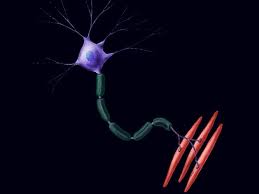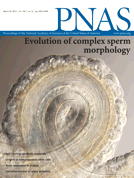导读:一个国际研究团队用遗传获得的运动神经元病患者的皮肤细胞培育出运动神经元。研究团队发现这种被称为TDP-43的变异蛋白和九成以上的运动神经元病例有关,它会导致运动神经细胞的死亡。

研究团队发现这种被称为TDP-43的变异蛋白和九成以上的运动神经元病例有关,它会导致运动神经细胞的死亡。该研究发表在Proceedings of the National Academy of Sciences杂志上。
这是首次科研人员能够观察TDP-43变异蛋白对人类运动神经元的直接影响。
爱丁堡大学Euan MacDonald运动神经元疾病研究中心领导这项研究,和伦敦国王学院、哥伦比亚大学、纽约和旧金山大学共同合作执行。
运动神经元疾病是由于控制行动、说话和呼吸的运动神经元的严重缺失所导致的灾难性的难以治愈的最终致命的疾病。
爱丁堡大学的Siddharthan Chandran教授说,使用患者的干细胞在培养皿上形成运动神经元疾病的模型,为我们研究该疾病的致病因提供了无限可能;而且通过这种经济有效的方式测试多种潜在治疗方法从而促进药物的研发。
Brian Dickie博士是运动神经元疾病协会研究和开发部主任,他说,对于开发一种MND疾病实验室模型能够实时反映患者细胞所发生的事件来说,这项研究具有重大的里程碑意义。
同时它也证明国际合作的重要性,通过世界各地顶级机构的杰出科学家共同关注了解这种疾病,并最终战胜这种灾难性疾病。

Mutant induced pluripotent stem cell lines recapitulate aspects of TDP-43 proteinopathies and reveal cell-specific vulnerability
Bilada Bilican, Andrea Serio, Sami J. Barmada, Agnes Lumi Nishimura, Gareth J. Sullivab, Monica Carrasco, Hemali P. Phatnani, Clare A. Puddifoot, David Story, Judy Fletcher, In-Hyun Park, Brad A. Friedman, George Q. Daley, David J. A. Wyllie, Giles E. Hardingham, Ian Wilmut, Steven Finkbeiner, Tom Maniatis, Christopher E. Shaw, and Siddharthan Chandran
Transactive response DNA-binding (TDP-43) protein is the dominant disease protein in amyotrophic lateral sclerosis (ALS) and a subgroup of frontotemporal lobar degeneration (FTLD-TDP). Identification of mutations in the gene encoding TDP-43 (TARDBP) in familial ALS confirms a mechanistic link between misaccumulation of TDP-43 and neurodegeneration and provides an opportunity to study TDP-43 proteinopathies in human neurons generated from patient fibroblasts by using induced pluripotent stem cells (iPSCs). Here, we report the generation of iPSCs that carry the TDP-43 M337V mutation and their differentiation into neurons and functional motor neurons. Mutant neurons had elevated levels of soluble and detergent-resistant TDP-43 protein, decreased survival in longitudinal studies, and increased vulnerability to antagonism of the PI3K pathway. We conclude that expression of physiological levels of TDP-43 in human neurons is sufficient to reveal a mutation-specific cell-autonomous phenotype and strongly supports this approach for the study of disease mechanisms and for drug screening.
文献链接:https://www.pnas.org/content/early/2012/03/20/1202922109.abstract








